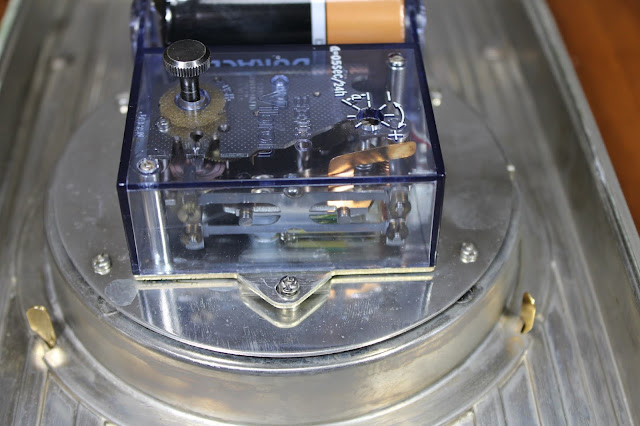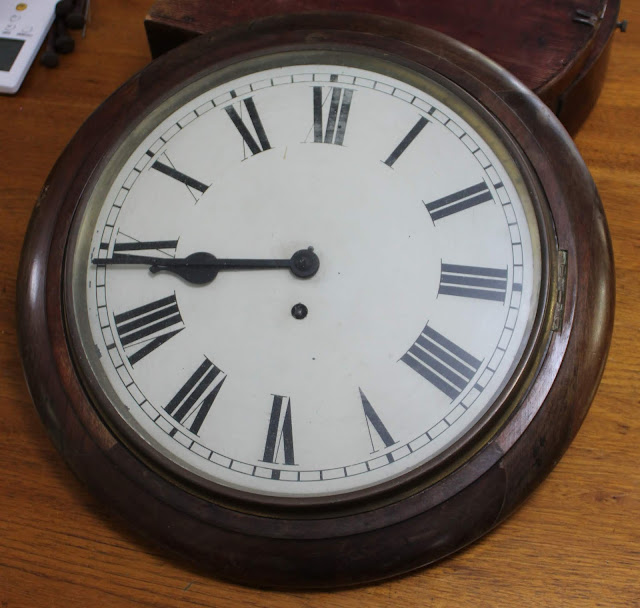Seiko QC-M1 Quartz Marine Master Clock-Chronometer 1968-74
Significance
The Seiko QC-M1 Quartz Marine Master Clock Chronometer was one of the first quartz marine chronometers developed in the late 1960s. Along with over aids to navigation, including radio, it saw the end to mechanical marine chronometers in the 1970s. Made from 1968-74, the QC-M1 would have been one of the first commercial quality quartz clocks.The QC-M1 used the newly available integrated circuits (IC) for digital frequency division from the quartz crystal and equally new power transistors to drive the electromechanical master clock and slave clock. The QC-M1 would have been very expensive in its day.
The Junghans Astro Chron table clock was the first domestic clock made from 1967. It used discrete transistors rather than ICs presumably due to cost.
Description
The QC-M1 was like no marine master clock before it and sets a new configuration for the class. It is housed in a steel box designed to hang on the wall of the ship's bridge.The clock can be powered form 24 V DC or 110 V AC, although it was probably battery-backed.
There are two circuit boards. The first has the quartz crystal oscillator and digital divider ICs to produce a 1 Hz pulse. The second is the driver for the electromechanical master and slave impulse clocks.
India specialises in scrapping old ships. Presumably this clock was in use up until it was scrapped, probably as the ship's master clock, rather than for navigation.
Via eBay from India. Avalaible on eBay now for a few hundred dollars; get them while you can!
Notes
http://wp.clockdoc.org/gallery/european-other/ Home page. Very good for electric clocks of all sorts.https://clockdoc.org/default.aspx?aid=8635 QC-M1 photos
QC-M1 with Master and slave clocks. The cabinet has been painted black rather tha the original naval blue-grey.
The quartz clock circuit board is to the right and the clock driver board to the left, both plug-in.
A small production run and a low serial. A very early quartz clock.
The quartz clock board. The quartz crystal in a glass tube is to the right. The integrated circuits are an early series of digital ICs. They divide the quartz frequency down to 1 Hz to drive the impulse master clock, via the high power driver board. The original colour of the case in the background.
Master clock with second hand. Electromechanical.
The slave clock.









Comments
Post a Comment